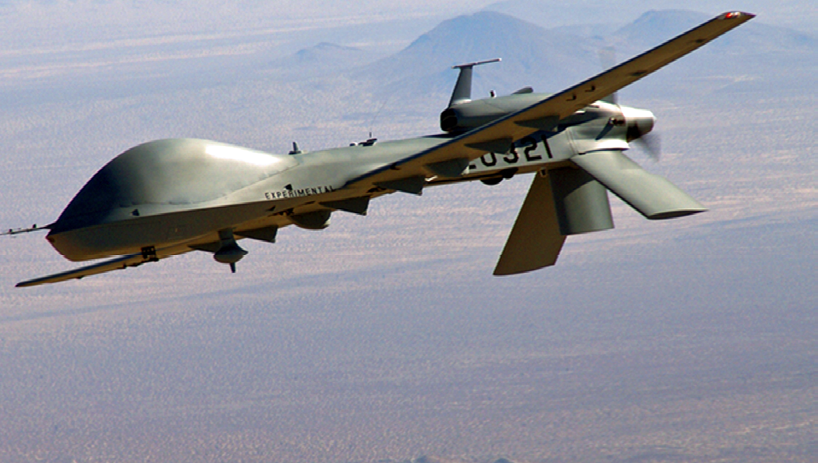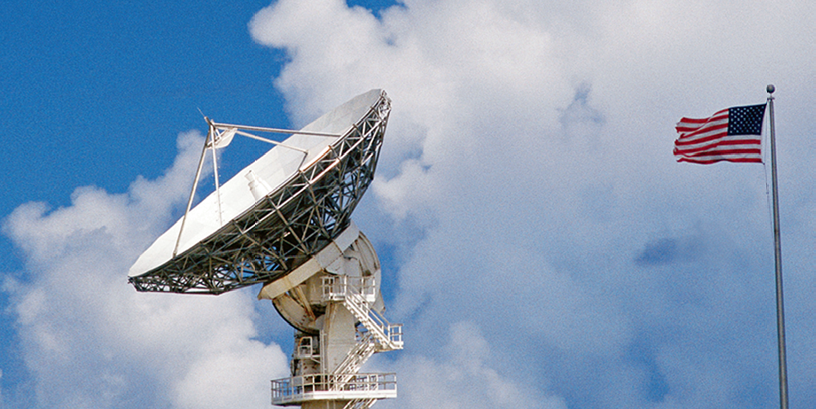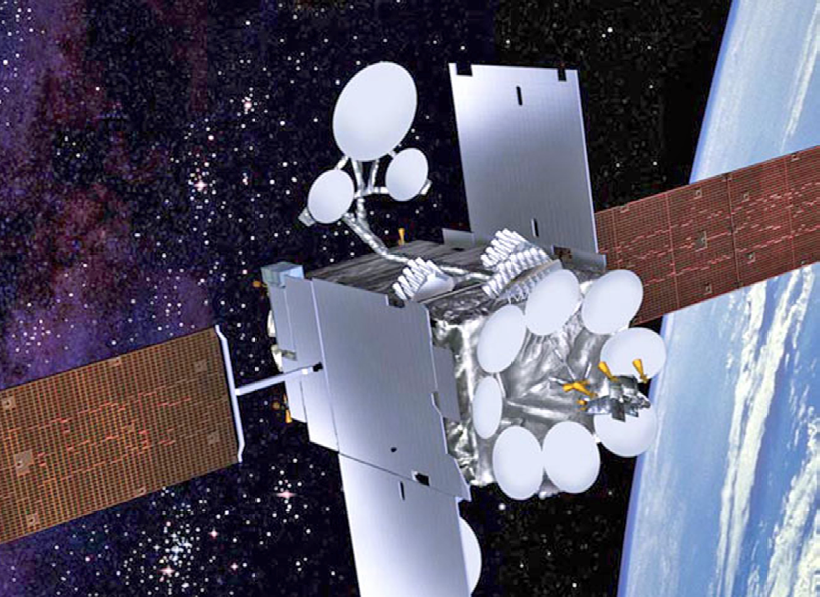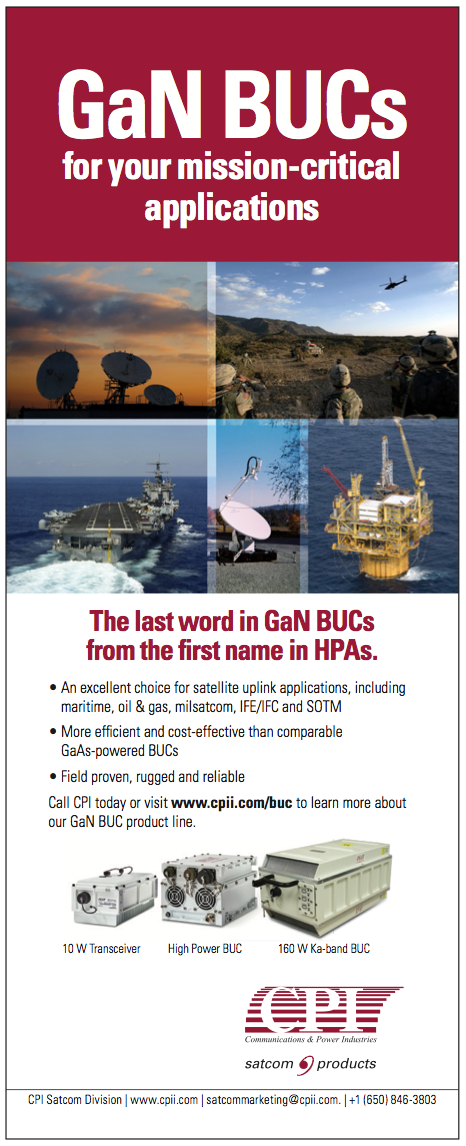As global intelligence and warfighting operations are conducted increasingly through unmanned aircraft, the military is re-evaluating its future data and communication technology needs to support these efforts.

The rapidly changing global security environment is driving Airborne Intelligence, Surveillance and Reconnaissance (AISR) and other highly mobile warfighter communities to deploy as many sensors as possible to maximize their effectiveness and reach.
Further advancements in tactical Unmanned Aerial Vehicles (UAVs) and Remotely Piloted Aircraft Systems (RPAs) add capabilities to the mix, yet, also come with their own data and command and control requirements. These factors increasingly drive demand for bandwidth availability, reliability and security.
With their long reach and range, today’s unmanned airborne operations require more than air-to-ground links. For Beyond Line of Site (BLOS) communications as well as high data rate exfiltration, satellite connectivity provides critical communications.
From enhanced security and reliability to the ability to interoperate with military satellite resources, Ka-band has emerged as the future of satellite communications (SATCOM) for manned and unmanned airborne missions.
Yet, some in the industry still choose to debate the value of Ka-band vs. Ku-band, despite the economic and operational advantages that Ka-band delivers.
Valued Support Proven Over Time
Unmanned aircraft has served our nation well for more than a century. At least two years before the Wright brothers’ first manned flight on December 17, 1903, warfighters deployed archaic UAV technology for combat and surveillance.
During the Vietnam War, these systems initially supported stealth surveillance. Since then, technological innovation – including SATCOM — has greatly expanded both manned and unmanned AISR capabilities to accommodate a vast array of missions, which seemingly transform by the day.
High-altitude long-endurance (HALE) AISR aircraft can fly 60,000 feet or higher, for up to 32 hours over vast stretches of oceans and terrain. Other variants of unmanned systems cover a wide range of mission profiles and geographies. These variances and complexities of missions reflect modern military operations, all of which depend upon the “anytime/anywhere” transmission of reliable and secure video and data.
As unmanned capabilities have ascended to advanced levels, so should the SATCOM solutions supporting those missions. According to Northern Sky Research’s third edition of the “Unmanned Aircraft Systems (UAS): Satcom and Imaging Markets” report (published in December of 2016), the government sector will create the largest demand for UAS satellite services, especially with a persistent need for ISR among Department of Defense (DoD) and Intelligence Community (IC) members in hostile areas.
Historically, legacy fixed SATCOM operators have adequately responded to prior needs by supplying available bandwidth leased on a regional basis. However, this dependence upon excess broadcast capacity designed for fixed users is inefficient and opportunistic.
Current military operational tempo and highly mobile applications merit reliable and available wideband mobility and solutions for increased agility and worldwide portability. Investments and innovation within the satellite industry — such as SATCOM as a Service, with on-demand access to satellite capability, anytime — allow the DoD to strategically leverage complementary commercial satellite communication (COMSATCOM) systems. This will boost the effectiveness, flexibility and redundancy of military satellite communication (MILSATCOM) systems for dynamic and global unmanned missions.
Despite the US government’s Wideband Global SATCOM (WGS) system having nine satellites on-orbit, there is often competing demand for WGS access for military geographic or mission-specific surges. When these surges occur, there must be additional flexible, reliable and accessible SATCOM capacity available, when and where required for mission success.
Senior government leadership has recognized COMSATCOM as a primary resource of the future, building a path toward enterprise-level, integrated SATCOM architecture and strategy to ensure reliable, available and resilient seamless, state-of-the-art SATCOM capabilities that are fully interoperable with their owned and operated government systems.

In fact, the ongoing analysis of alternatives (AoA) for a follow-on wideband communications system to the WGS system, which includes space, air and ground layer communication capabilities, includes industry participation to determine the right way forward, rather than simply buying more DoD-owned, purpose-built satellite assets.
As part of its analysis, the US Air Force is also exploring alternative business relationships with SATCOM suppliers rather than the traditional and dated Ku-band transponder leasing of the extended past. It is now widely acknowledged that commercially provided Ka-band proves essential for an integrated architecture.
New Advantages for a New Era
In order for an integrated architecture to enable optimum interoperability, diversity and flexibility in Ka-band — with both the contiguous commercial and military frequencies — SATCOM must, and will, play a critical role for resiliency.
With this, government users achieve optimal operations at anytime, anywhere around the world by augmenting their MILSATCOM resources with seamless, globally available high-capacity wideband connectivity on land, at sea, and in the air.
Well-designed Ka-band satellite constellations establish uniform coverage in both bandwidth and power with the flexibility to move bandwidth seamlessly into demanding regions — ideal for complex unmanned missions with high data-rate requirements.
Spot beam architectures designed for mobility create a uniform distribution of power and allow for frequency of use and consistent, uninterrupted user experience.

Steerable spot beams worldwide add additional capacity and flexibility in Ka-band with the ability to “follow” the airborne platform no matter how high it flies or how many thousands of miles it must cover.
In contrast, older broadcast-transponded Ku-band satellites distribute capacity via large regional beams, resulting in irregular power distribution that rapidly degrades outside of the center of the beam, leading to widely variable data rates depending upon the user’s location within the beam.
This is not the case for modern Ka-band high capacity satellites (HCS) with uniform power distribution and committed information rates, as they deliver mission assurance through highly reliable service. This implementation empowers aeronautical users with SATCOM to support high-fidelity intelligence from virtually any area of operation.
Another unique advantage of Ka-band over Ku-band is that it is the only frequency where the commercial and military bands are immediately adjacent to each other, so commercial services transparently complement DoD users’ MILSATCOM capacity.
Ka-band terminals are currently available that easily tune through the contiguous 1.5GHz of Ka-band and readily switch between US government-owned systems and private-sector SATCOM systems. Transitioning between the two military Ka-band networks seamlessly affords users the ultimate in operational flexibility and network restoral options across the full spectrum of environments.

Artistic rendition of an Inmarsat I-5 Global Xpress satellite.
This approach is feasible with fully interoperable SATCOM and minimizes the size, weight and power (SWAP) requirements for the on-board terminals — a critical consideration for airborne and other platforms — features not afforded with legacy Ku-band lease and equipment.
The AISR community prefers smaller antennas since platform real estate is always at a premium. With Ka-band, airborne missions benefit from antennas that are as small as 30 cm, or one-quarter the size of Ku-band, another key SWAP factor.
This makes for an ideal fit on smaller airframes while blending into aerodynamic surfaces, extending fuel efficiency and range. On small antennas and high frequencies, Ka-band satellite communication networks have proven to exceed the performance of Ku-bands by four-fold with comparable atmospheric considerations.
Ka-band HCS networks also introduce a modern and responsive business and acquisition approach which increases operational flexibility with an always-on network, yet with the greater affordability of on-demand committed information rates with relevant service level agreements.
This methodology removes the guesswork of provisioning duplicative and costly fixed transponder leases to be used inefficiently or, in some cases, not at all. With Ka-band, users receive high-quality, consistent coverage and connectivity no matter where in the world, enhancing flexibility and resilience at reduced costs and risk.
We in the industry welcome the government’s AoA, as well as other pilot programs as a forward-looking means of innovation in acquisition to extend agility for the end-user. Our industry offers a wide range of solution sets, which are well suited for government applications. There are suitable applications for broadcast-centric bandwidth. However, Ka-band systems are designed for the modern age of intelligence and highly mobile warfare. When you invest in Ka-band, you acquire capabilities on par with WGS, yet with more operational, management and business flexibility. Military users will not get shortchanged because they are outside of current active operational or “hot” zones such as Iraq and Syria.
Innovative Ka-band systems (such as SATCOM as a Service) are ideally suited for the type of business models the government is exploring to add greater efficiencies and responsiveness to meet and exceed DoD requirements.
http://www.inmarsat.com/government/us-government/

Ms. Cowen-Hirsch is Inmarsat’s Senior Vice President for Government Strategy and Policy in the United States Government Business Unit. Previously, as a decorated member of the Senior Executive Service (SES) in the US Department of Defense (DoD), she served as the Program Executive Officer for SATCOM, Teleport and Services at the Defense Information Systems Agency (DISA). This was one of several key SES executive posts, including the first-ever Vice Component Acquisition Executive for DISA, with executive management responsibility for the acquisition oversight and horizontal integration of DISA’s products, services and programs.
Among her notable achievements, Ms. Cowen-Hirsch established the Defense Spectrum Office as its first Director, where her responsibilities included the development of national security spectrum strategic plans and policies, and the national and international negotiation of defense spectrum issues. Her broad defense career ranged from systems engineering, experimental flight test, program management, spectrum management and a wide range of executive leadership positions—Ms. Cowen-Hirsch received an Exemplary Service Medal from the DoD.


